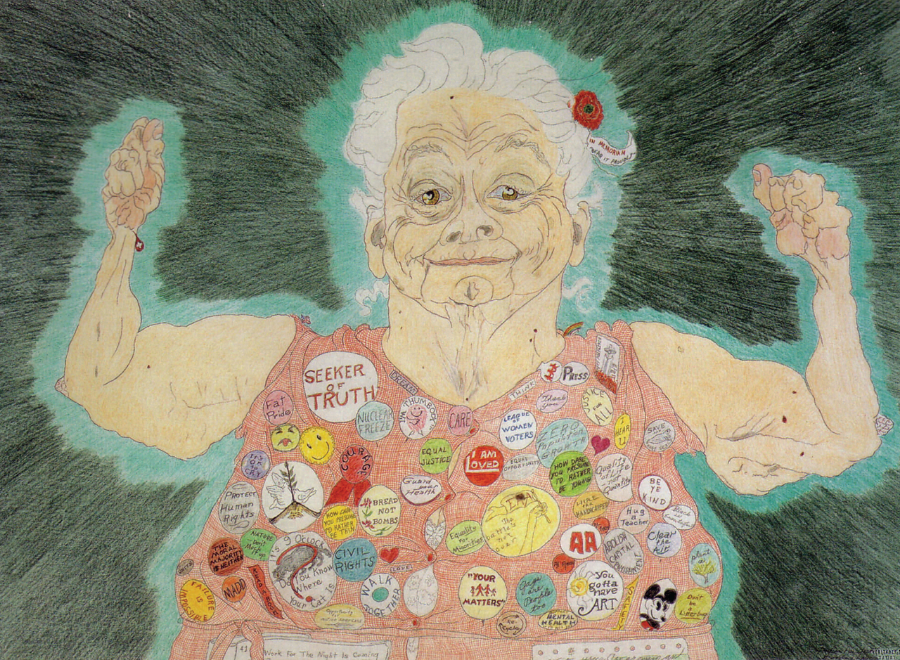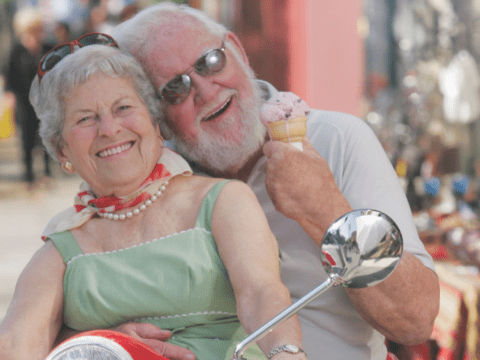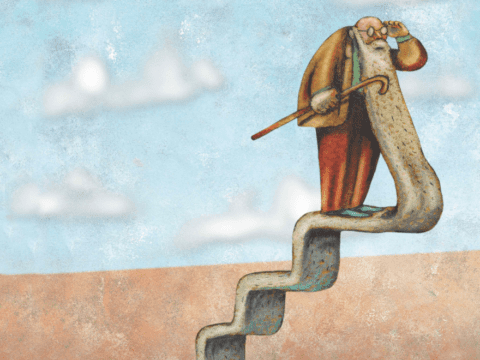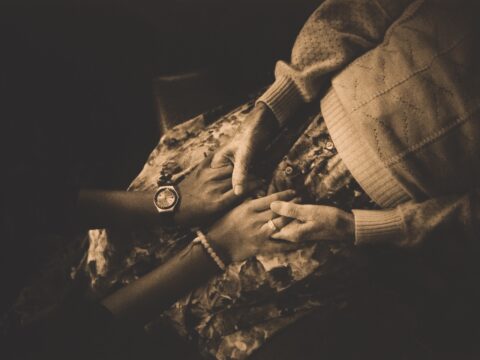With a small crew of seniors and immigrants backing her up, Donna Stewart descended on North Vancouver City Council in January 2010. She hadn’t been invited. Instead, the 81-year-old housing activist had muscled her way onto the agenda, intent on securing a piece of municipal land for her cause. Using Power-Point, she argued that the council had a moral obligation to use the land to benefit the people of her community, to build homes that working people can afford.
“It was pretty brassy,” the member of St. Andrews United admits in an interview at her North Vancouver condo. “Women my age were taught not to make waves. But other people — who are busy raising families or earning a living — need us to make waves.”
Her muscle worked. While there’s no hole in the ground yet, the city has moved toward building the North Shore’s first new affordable housing complex in over a dozen years.
Stewart is thrilled. After spending her busy middle years raising five kids, teaching high school and college English, being a pastor’s wife and volunteering in the community, in her retirement she has finally had time to reinvent herself as a focused — and yes, brassy — activist. It’s what she does, she quips, instead of playing bridge or golf.
Stewart knows she isn’t the only radical retiree. “Because you’ve raised children, you have this expanded concern for your community,” she reflects. “I’m not suggesting that men don’t have it too. But men, maybe because they’ve been in the business community more, they’re more apt to accept that the market rules. If you’ve been a homemaker, you feel you have a real responsibility for making people’s lives better.”
Canada is home to a bevy of powerful older women activists — including Flora MacDonald (peace, human rights); Michele Landsberg (feminism); Rita Cox (literacy); Bonnie Sherr Klein (disability rights); Viola Robinson (First Nations and women’s rights); and Jean Swanson (housing), among many others.
Indeed, the link between age and activism is no coincidence, according to American feminist Gloria Steinem — who turned 77 this year. In an interview published on feminism.com, she said, “We forget that the pattern of women’s activism tends to be the reverse of men — that is, women are more conservative when we’re young and we get more radical as we get older, but men are the other way around — rebellious when they’re young and more conservative as they get older. That’s because men gain power as they get older and replace their fathers. Women lose power as they get older and replace their mothers.”
Older women activists today are laying the groundwork; the crest of senior protesters is probably still coming. In 2009, the over-65 set accounted for 13.9 percent of the Canadian population, according to Statistics Canada. By 2036, that percentage will likely double as the boomers — the generation that ignited the sexual revolution, the women’s movement and the anti-war protests — grow older.
Yet the boomers — currently aged 47 to 65 — may find unexpected challenges in getting their voices heard. Stewart says she knows that, as an older woman, her audiences are quick to discount her arguments because of her age. Some politicians and members of the media don’t believe older women understand how the world works, she says. It’s this ugly dynamic that the rabble-rousing songsters, the Raging Grannies, address at demonstrations when they parody the image of the doddering grandmother.
Indeed, according to one sociologist, politicians and media do ignore older women activists. At the University of British Columbia, Prof. Chris MacKenzie studies how social movements form. In activism, he says, appearance is king.
“In the public realm, we know image matters,” MacKenzie says in a phone interview, noting that the abundance of time older women can lend to social movements is invaluable — even if elder faces in front of a camera aren’t necessarily as effective. “The cardigan set has every right to be outraged [that they’re often sidelined]. But if they’re interested in the cause, the cause must come first.”
However, another UBC sociologist, Rima Wilkes, doesn’t believe older women should get out of the way. In fact, she says, they should hustle in front of the cameras.
Attracting the media “is an issue for the whole population,” Wilkes says. “Your run-of-the-mill demonstration is not going to get attention….Getting other people to care about your issue, that’s the million-dollar question. You have to be really creative.”
Of course, you don’t have to be yelling into a microphone to make social change. Away from the spotlight, the Stephen Lewis Foundation has engaged thousands of senior Canadian women in the Grandmothers to Grandmothers (G2G) campaign, which raises money for African grandmothers caring for their AIDS-orphaned grandchildren.
To Sheila Fahlman’s lively crew in Regina, for example, it doesn’t matter whether it’s a blustery January or lazy August: they show up to their monthly meetings. That’s because these 100 women are fired up. For many of them, Fahlman explains, it was the birth of their first grandchild that sparked their desire to get involved with the Grandmothers.
Fahlman, 61, co-ordinates the G2G group — one of 240 across Canada. Older women make great volunteers, she says in a phone interview from Regina, because their kids have left home and they have the time to devote; they’re willing to share their expertise (Dinner for 500? No problem!); and they’re determined to fundraise and educate.
But do they make great activists? In her experience, that’s a touchy subject.
“I don’t consider myself to be an activist,” Fahlman says, explaining that of the 100 seniors involved, only a few are interested in political advocacy. “There’s more of a nurturing side to these [G2G] women. Lots will sign petitions and post-cards. A few will meet with their MP, but most find that uncomfortable.”
Political action, Fahlman says, can be more frustrating and less satisfying than fundraising. Back in 2004, she recounts, some women who are now Grandmothers lobbied the House of Commons for changes to Canada’s Patents Act that would allow affordable, generic anti-retroviral drugs to be exported to countries without manufacturing facilities.
The bill passed, but the legislation remained so complicated that only a single shipment of generic AIDS medications was ever made. Recently, the Grandmothers campaigned for further amendments introduced by former Winnipeg North MP Judy Wasylycia-Leis (who turns 60 this year) to help ease the process and eventually start the drugs flowing into Africa.
The House of Commons passed Bill C-393 in March, but it died in the Senate after Conservative senators blocked the bill from going to a vote before the May federal election.
While legislative work is obviously important, Fahlman says, fundraising immediately benefits the African grandmothers, who are always in the G2G group’s thoughts. Since the G2G campaign started in 2006, senior Canadian women have raised over $10 million, which has been distributed by the foundation in Africa.
Fundraising and education are not morally sufficient, though, according to Canada’s most media-savvy great-grandmother. Now 82, Betty Krawczyk has been arrested at least 10 times in the last two decades, and she has spent 3½ years in B.C. jails for demonstrating against the logging of Clayoquot Sound, the destruction of Eagleridge Bluffs and other causes.
Elders owe it to their children and grandchildren to get out and fight for the planet, Krawczyk says in a phone interview from the Comox Valley, B.C. Those who are now seniors grew up with clean air and water, she says. So, too, should those who come after. For a generation who learned how to force social change — as she did fighting for civil rights in her native Louisiana — retirement is an opportunity to up the ante, she believes. According to Krawczyk, governments and corporations respond to confrontation.
“Senior women have always been— until recently — the moderators of society and the stewards of the land,” she says. “We need an army of grandmothers to come out and say, ‘We’re not just going to let this pass….. I can remember times in my life when I just wrote letters [to politicians and companies]. But it is not enough. We need to put our bodies out there.”
Krawczyk’s image of grandmother-activist works in the media because she looks different from the prototypical older woman, with her spiky grey hair and bright Gore-Tex jackets, according to sociologist MacKenzie. Plus, in photographs, she is often hollering.
While Krawczyk is an expert in using her image to draw attention to a cause, Stewart has also found a solution to battling ageism. Read books, she implores. Know more than everyone else, and fight based on that knowledge. Use your entire life experience of volunteer and paid work to inform your advocacy. You can catch younger people off guard if they’re expecting a flake.
Advocacy, Stewart admits, can be very frustrating. And her generation — who came of age in the 1950s — was not raised to rabble-rouse. Still, she says, given the alarming housing crunch and other 21st-century crises, she encourages other senior women to get bold and advocate for change.
“I think people can grow,” she says. “When they get enough fire in their bellies, they speak up.”
Armed with knowledge, passion— and perhaps some brassiness — older women really can be masterful activists.
***
This story first appeared in The United Church Observer’s June 2011 issue with the title “Old, bold and out to change the world.”














